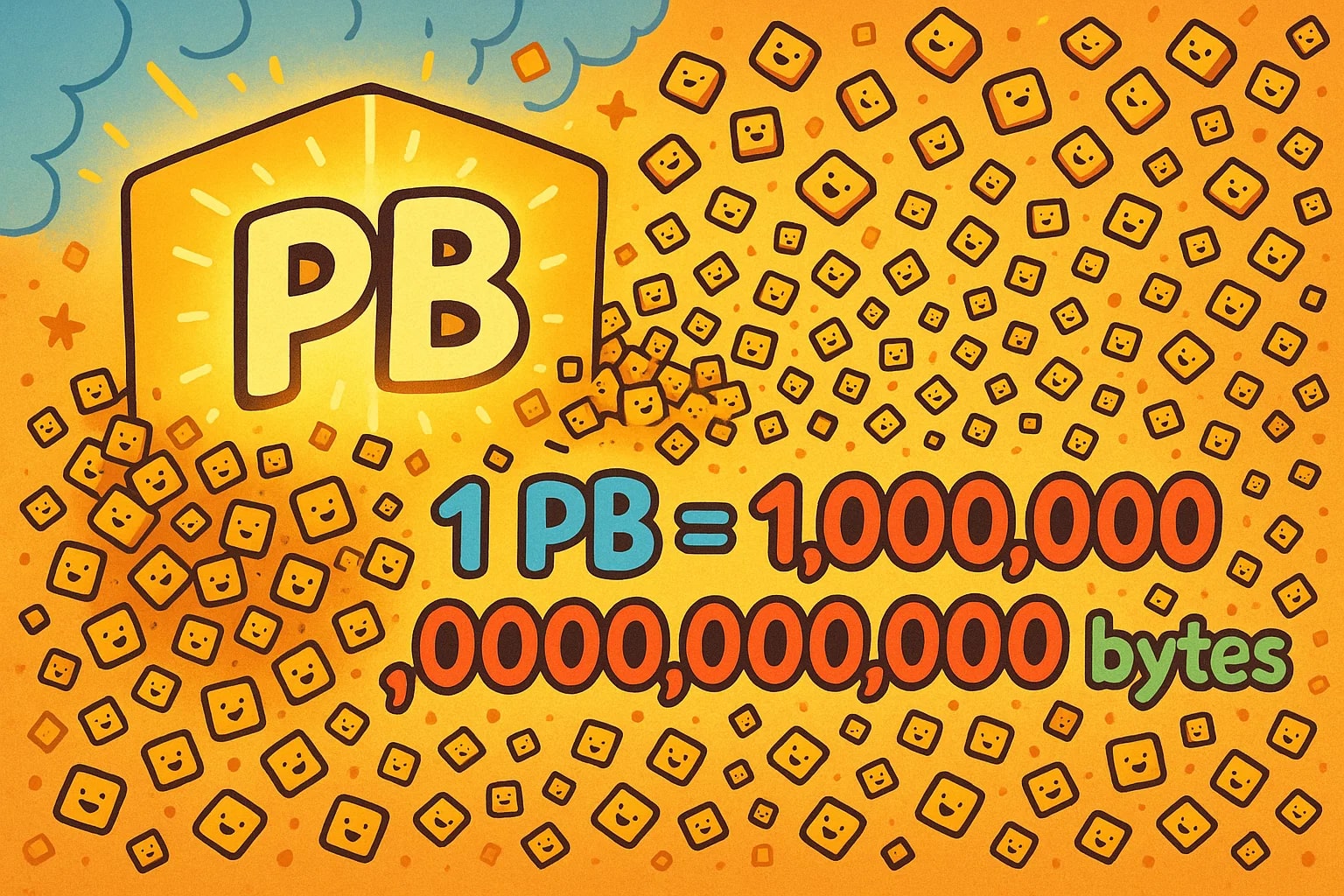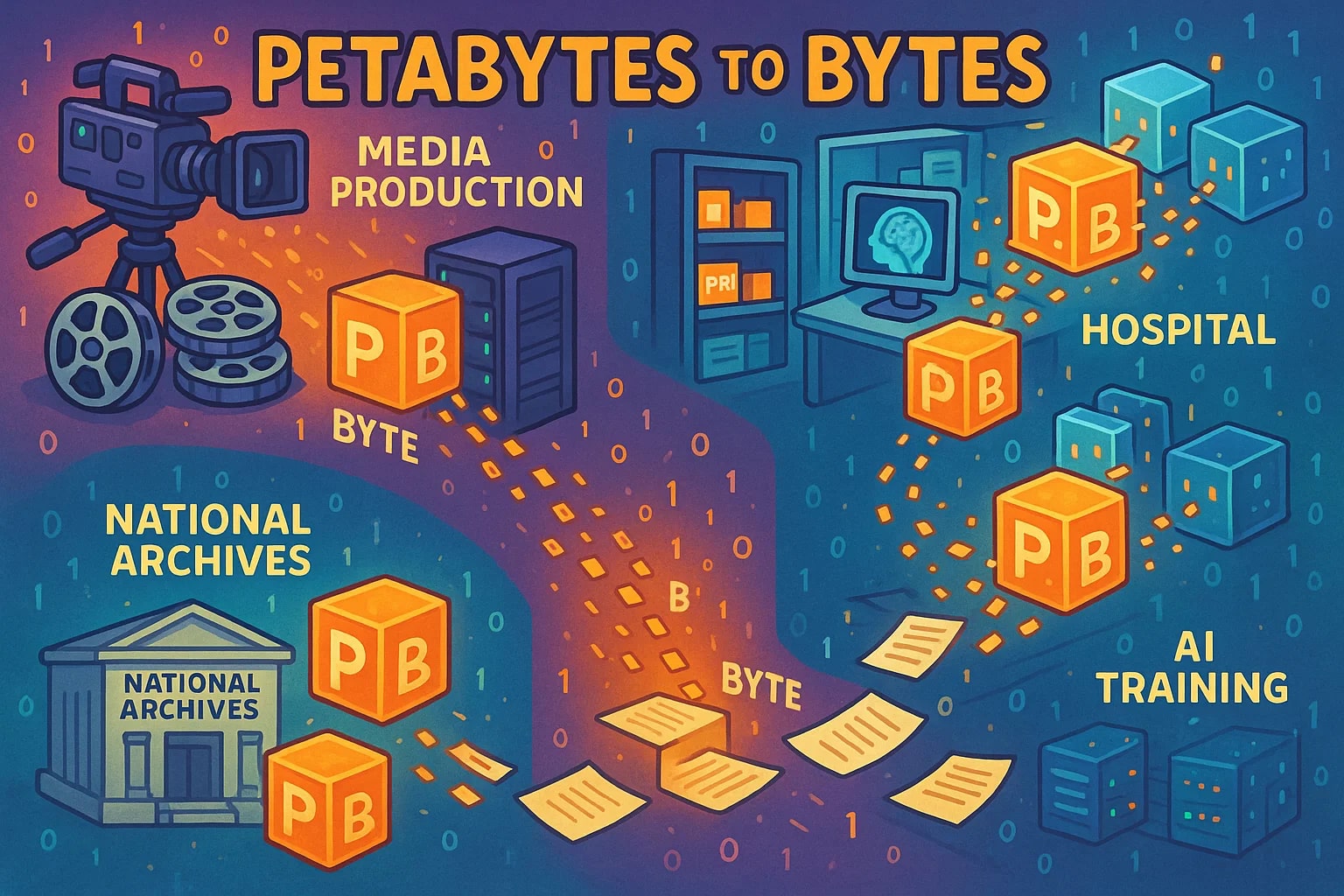petabyte to byte – How to convert PB to B
You’ve probably seen gigabytes on your phone, terabytes on your hard drive — but what about petabytes? That’s the scale of data we’re now dealing with in the worlds of big tech, research, and cloud infrastructure. And when things get really detailed, you may need to convert those petabytes into bytes — the tiny building blocks of all digital information.
This isn’t just a numbers game. It’s how engineers plan for server loads, how researchers store decades of science, and how companies keep billions of videos, images, and messages flowing.
Let’s break it down.

What is a petabyte (PB)?
A petabyte is equal to 1,000,000,000,000,000 bytes, or one quadrillion bytes. It’s part of the SI (decimal) system, and it’s the unit you hear when people talk about:
-
Massive cloud storage platforms
-
Scientific research datasets
-
Backup solutions for enterprises
-
Global data traffic volumes
-
AI training pipelines
To put it into perspective, one petabyte could hold about 13 years of HD video or over 4,000 digital copies of the entire U.S. Library of Congress.
What is a byte (B)?
A byte is the foundation — the basic unit of digital storage. One byte typically holds a single character, like the letter “A” or a number in a text file. Everything — from emails and apps to photos and databases — is made of bytes. Multiply those bytes millions or billions of times, and you’re looking at modern-scale data.
How to convert petabyte to byte
Here’s the exact formula:
1 PB = 1,000,000,000,000,000 bytes
So to convert petabytes to bytes:
bytes = petabytes × 1,000,000,000,000,000
If your company is handling 2.5 PB of archived logs:
2.5 × 1,000,000,000,000,000 = 2,500,000,000,000,000 bytes
Your research center collects 0.8 PB of climate data every month:
0.8 × 1,000,000,000,000,000 = 800,000,000,000,000 bytes
Storing 6 PB of video surveillance footage?
6 × 1,000,000,000,000,000 = 6,000,000,000,000,000 bytes
Need help running the math faster? Use our Data Storage Converter or explore more tools in our complete Conversion tools directory.
Did you know?
-
You’d need over 745 million floppy disks to store a single petabyte — that’s taller than Mount Everest if stacked.
-
The Large Hadron Collider (CERN) generates about 50 PB of data per year from its physics experiments.
-
Social media giants like Facebook manage multiple petabytes of photo and video uploads every single day.
-
One PB of raw genetic data could cover the DNA sequences of more than 300,000 people.
-
NASA’s Earth observation satellites generate petabyte-scale imagery that must be stored in byte-perfect detail for decades.
Where massive meets measurable
Petabytes might sound abstract — like something only data centers or cloud providers worry about. But that scale is quickly becoming relevant to more fields, from media production to healthcare and national archives. And when it comes down to operations, planning, or legal compliance, sometimes you need to go back to the smallest unit: the byte.
When designing systems that span global servers, disaster recovery protocols, or high-speed AI training, translating petabytes into bytes helps engineers and analysts fine-tune everything from bandwidth allocation to encryption overhead.
It’s how a single change in data policy — even something as small as increasing image resolution — can be measured down to the byte across petabytes of content.

Final takeaway – multiply big, think small
To go from petabytes to bytes, all you need is one clean formula:
bytes = petabytes × 1,000,000,000,000,000
This makes it easy to zoom from the biggest storage units back down to individual pieces of data — whether you're planning infrastructure or just satisfying your curiosity about how much information is really behind that “PB” label.
Need more conversions like this? Visit the Data Storage Converter or explore all of Jetcalculator’s Conversion tools to handle every digital unit with ease.

